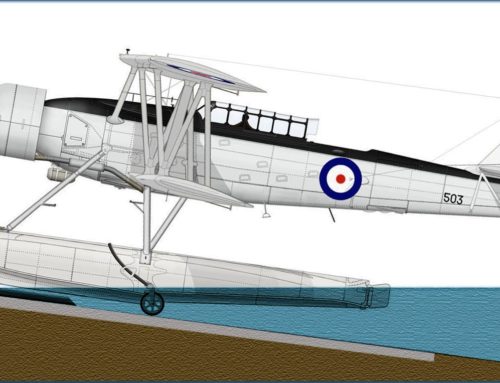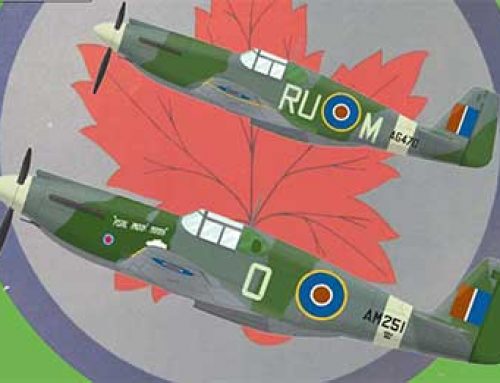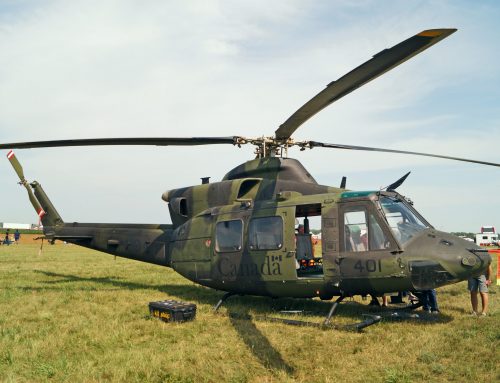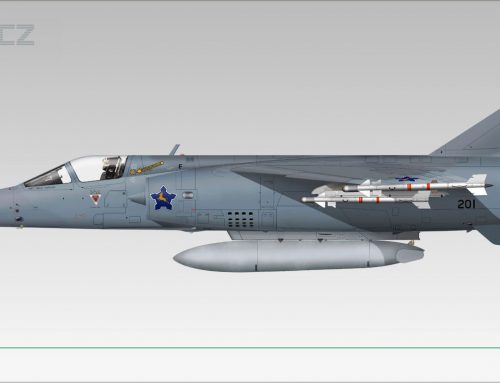Blue grey Malta Spitfires questions….
Wed Oct 30 13:59:52 2002
While reading through, Spitfire A complete fighting history by Alfred Price, on page 202 “ After their arrival on Malta in desert camouflage, many of the Spitfires had dark blue-grey paint daubed over the light brown parts of the camouflage to make them less visible from above when flying over the sea.”
Question #1
“Many of the Spitfires had dark blue-grey paint daubed over the light brown” was the light brown, mid stone? I know some time back there were threads pertaining to this blue-grey colour on Malta spitfires and what the eventual outcome was I didn’t find out.
Question #2
Was there a reasonable colour match to the blue-grey and was the paint local manufacturer or stocks of RAF paint that the Beauforts and the like that were used for anti-shipping strikes?
Anders Svennevik
Some answers
Wed Oct 30 14:31:45 2002
Q1: Yes, Midstone.
Q2: Malta was not really an RAF base until well into the war. Malta was a Royal Navy and Fleet Air Arm base. When the fighting started and RAF aircraft, fighters and bombers, started arriving the situation was such that I sincerely doubt that paint could be brought in. So there are two alternatives:
– some FAA and/or early RAF paint was used.
– locally available paint was used.
It is impossible with what is known today to say what the colour was.
Finally two comments
– the Beauforts were not painted in Malta, but at Aboukir to the best of my knowledge.
– there were Spitfires painted in blue or blue-grey before delivery to Malta. Extra dark sea grey is a possibility here as are other dark blue/grey colours.
Steven-modeldad
This is a “COW” Question! and Graham will soon follow
Wed Oct 30 15:04:39 2002
Can Of Worms
The blue-grays and grays on Malta remain unverifiable… everything from local mix to FAA extra dark sea gray, which actually has a blue cast to it. There is the issue of painting prior to delivery, as on the carrier Wasp…My theory, thinned down ship camo paint…because they wee darker than USN blue-gray which is the color the Wildcats were painted at the time. Other deliveries to Gibraltar might have been Mediterranean blue.
As to the Beauforts, it is my understanding that there was experimentation with two shades of Mediterranean blue.
I am sure Graham will give his opinion which is as valid as any other guess.
Jennings
I don’t care what anybody says…
Wed Oct 30 16:19:26 2002
The bottom-most bottom line is, we’ll never know. There is at least one color photograph of a crashed Spit wearing some kind of what appears (caveat, caveat, caveat) blue-ish camouflage. I say “caveat” because there are also photos of Argentine A-4Cs in a sand and brown camouflage scheme that never existed. It was a poorly reproduced photo, and it’s been copied numerous times.
There are anecdotal reports of blue and blue-grey camouflaged Spits on Malta. That’s pretty much a given. That, plus the one (caveat) photo I know of tells me that at least some of them had some kind of camo besides your standard Spit schemes.
Now, what colors were used, what patterns were used, and how the paints were applied is likely to remain a mystery for the balance of time as we know it.
There simply wasn’t the time, interest, or reason to record anything about why it was done, how it was done, etc.
What we’re left with is (more or less) educated guess work. And that’s ALL we’re left with. I don’t care how much of an “expert” someone pretends to be, the fact is that nobody on the planet has ever come forth with hard information, and I seriously doubt they ever will.
So, building a model? Have at it, and whatever you come up with is IMPOSSIBLE (and I almost never use that word) to prove wrong. As long as you like it, that’s all that matters.
Graham Boak
Some things are definite, some aren’t.
Wed Oct 30 17:56:38 2002
Which Spitfire do you want to model? Because that is what affects the answer most.
1. The first batch (and presumably the second) was overpainted in Malta with a single uppersurface colour of some dark grey, or grey/blue, stated as a mix. Look for white codes and serials. These are predominantly 249 Sq.
2. The batch delivered from Wasp in Operation Calendar (and a few laggards) were overpainted – at least some whilst on the carrier – in a (lighter?) blue-grey, still fairly dark. This is the batch from which a colour photo exists. A reasonable match would seem to be Light Mediterranean Blue (actually quite a dark colour)
For these three batches there are four pilots’ statements regarding them being blue, or blue-grey, and none that they were any other colour (although the second batch was definitely in desert when launched from Eagle, and Calendar a/c were in desert when loaded on Wasp!)
3. In the early summer, aircraft were delivered in desert, and those in the Takali wing (esp 249 Sq) and Hal Far (185 Sq) appear in two dark upper-surface colours. This appears to be overpainting of the mid-stone (only) and there is an eyewitness account from somewhat later stating that he thinned down Extra Dark Sea Grey for precisely this purpose. There is at least one pilot’s account of only seeing desert camouflaged a/c, but this is from the Luqa Wing, and specifically rules out whatever may have happened on other bases.
4. Statements say that a darker camouflage scheme was adopted when Spitfires were fighter-bomber (and f-b escort) missions were flown to Sicily, late summer. One pilot mentions green and grey, probably coincidentally, but with the implication that this was rare at this time. Photographs of the aircraft he is talking about show two distinct schemes, one desert and the other two dark colours.
5. In Spring 1943, 249 Sq is flying with aircraft in a very dark single uppersurface colour, looking very much like the post-war Fleet Air Arm scheme of Extra Dark Sea Grey. Everybody else appears to be in either desert or day Fighter schemes. Clearly 249 had its own traditions to maintain!
6. Then there are the apparent on-offs, like the 1435 a/c in what looks like single uppersurface mid-stone.
The evidence does fall into patterns, when the aircraft deliveries and pilot dates are taken into account. But you will need to find your aircraft, and then sensible discussions can start about the options. For most of the aircraft little can be said with any confidence, but that is not true for enough to keep the most active modeller happy.
Broadbrush statements that these things are totally unknowable are arrant twaddle. Much will remain unknown, I’m sure, but much is known and pieces of the jigsaw will keep cropping up. One day, someone burrowing in the PRO will find the order for so many tins of paint X to be delivered to Wasp….well, I can dream!
Roberto
Spitfires flying from the USS WASP
Wed Oct 30 20:29:33 2002
Those Spitfires were painted ANA Intermediate Blue on the top surfaces for the long flight over water.
I have recently seen pictures of those aircraft and there was an article in Scale Aircraft Modelling or Modeller, I need to go and check.
I’ll Email you directly.
Glenn Irvine, stirring up the Wasp’s nest
The obvious overlooked answer to blue Wasp Spits
Thu Oct 31 20:38:45 2002
To anyone interested, one point about the availability of an appropriate ‘blue’ paint on the USS Wasp at the time of delivery, all informed commenters state that there doesn’t appear to be a true ‘blue’available at that time- only blue grey USN camo colours. It seems those commenting have overlooked the obvious.
The one blue available on a USS carrier would be — insignia blue-, and this could easily explain the colour used at the time, its certainly dark enough and definitely blue.
(thanks to Brett Green for permission)





